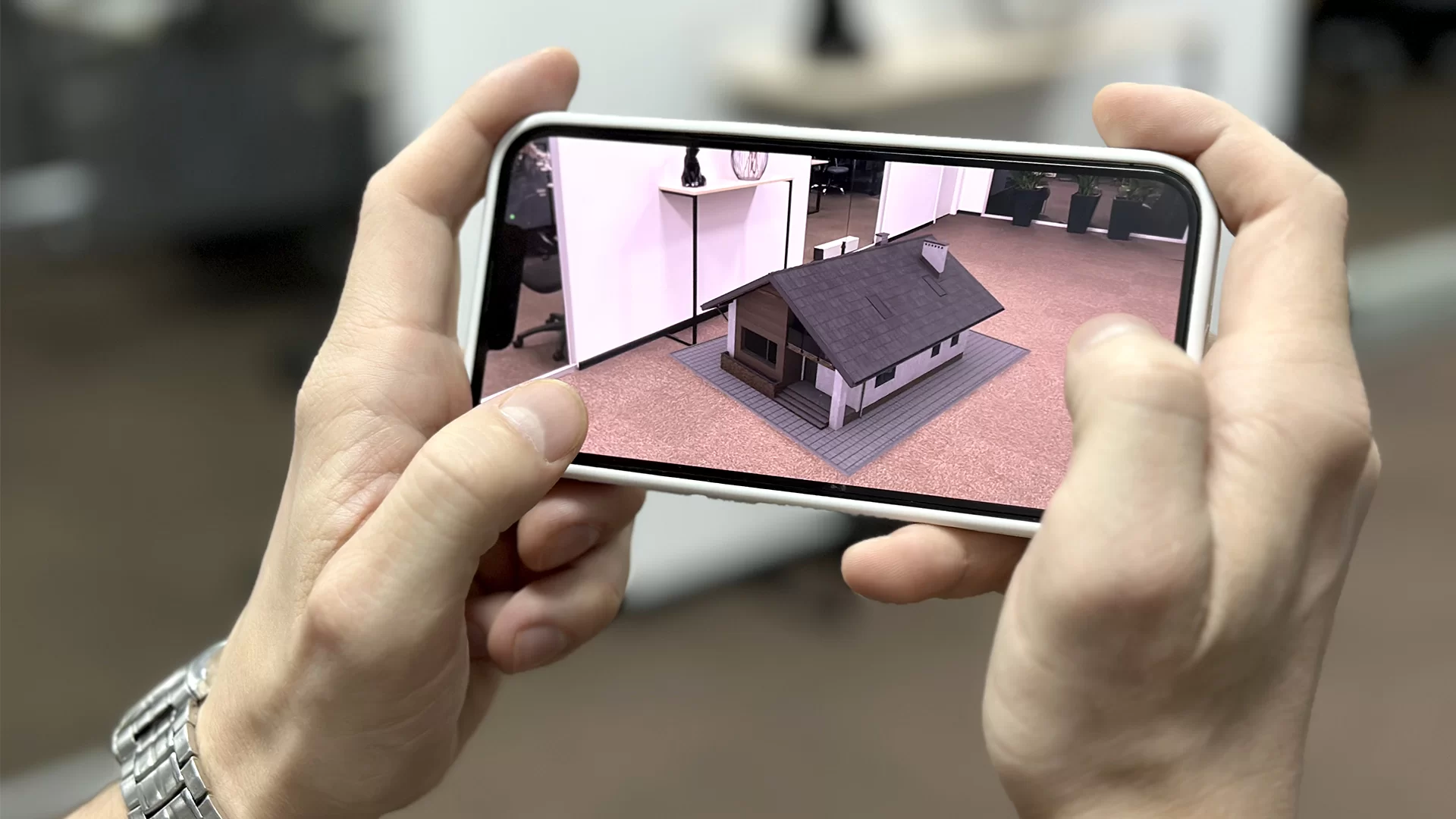Using augmented reality for architecture is not the most common practice. While AR technology is quite familiar to us in the context of online shopping and entertainment, its use in the architecture industry is rather a new thing. But that doesn’t mean you cannot benefit from it. In fact, this kind of CGI has a lot to offer.
In this article, we will show you how architects can use augmented reality to enhance various aspects of their work. You will also see some examples of AR-ready 3D models created by our architectural visualization studio. And who knows — maybe it’s just the thing you were looking for to freshen up your project presentations. Let’s take a look!
What Is Augmented Reality?
Augmented reality is a technology that allows one to view computer-generated 3D objects in a real-life environment. AR is available on smartphones and tablets. All it requires is the use of the device’s camera and an optimized 3D model in a suitable format. For iOS, it’s USDZ, and for Android — GLB. You just need to open a link to the model, and you will see the 3D object right in front of you through the camera of your device.
How Is AR Used in Architecture?
The main use of augmented reality in architecture is for project presentations, where you can showcase a realistic 3D model of your building concept in an interactive way. It works great for presentations you do for your clients, as AR allows them to examine the design from any angle, and zoom in and out on it.
Ensure your exterior design project leaves a lasting impression and takes your clients’ breath away with stunning visuals.
At the same time, augmented reality can be a valuable collaboration tool for when you work on a project with your team. Namely, it can be quicker and easier to view the entire concept in AR and identify any issues that might need improvement.
Below, you can see an AR-ready 3D house exterior created by our CG artists on top of a 3D virtual tour rendering. It is done in greyscale, which allows one to focus purely on the architecture of the building. This kind of visual can come in handy at the earlier stages of the design process when changes are still being made to the size and shape of the structure.

Scan QR code to view this model in AR
And here, we created a textured version of the same house. This option is meant to help finalize the selection of exterior materials.

Scan QR code to view this model in AR
As you can see, there are some real benefits to using augmented reality for architecture design process and presentations. So, if you want to try something new to streamline and enhance your workflow, you should definitely consider tapping into AR technology.
Looking for full-range 3D services? Contact us at ArchiCGI and book a free consultation with one of our client managers! We’ll answer any questions you might have and help you find out what solutions will be best for your architecture business.

Ana Wayne
Content Writer, Copywriter
Ana is a content writer for ArchiCGI. She has a passion for design and architecture - and for talking about it. Outside of work, she is a fan of sci-fi movies and a street food connoisseur.



